This article explores the significant impact of Indian Americans in New York’s electoral landscape, discussing their challenges, opportunities, and contributions to the democratic process.
Understanding the Indian American Community in New York
The Indian American community in New York is a vibrant tapestry of cultures, languages, and traditions. With roots from various regions of India, this community includes individuals from diverse backgrounds such as Punjabi, Gujarati, Tamil, and Bengali, among others. Their political engagement is shaped by a blend of historical experiences, religious beliefs, and socioeconomic statuses. This diversity not only enriches the community but also creates a complex landscape for political mobilization and voter engagement. Understanding these nuances is crucial for grasping how Indian Americans influence New York’s electoral process.
The Historical Context of Indian American Political Engagement
Indian Americans have a rich history of political engagement that dates back to the early 20th century. Initially, their participation was minimal due to restrictive immigration laws and social barriers. However, as these laws evolved and the community expanded, Indian Americans began to emerge as a significant voting bloc. The Civil Rights Movement of the 1960s further galvanized political activism, leading to increased representation in local and state governments. Today, Indian Americans are recognized as a vital part of New York’s political landscape, contributing to the decision-making processes that affect their communities.
Demographics and Voting Patterns of Indian Americans
Analyzing the demographics of Indian Americans in New York reveals a community that is predominantly urban, with a significant concentration in areas like Queens and Nassau County. This urban presence influences their voting patterns, which are often aligned with progressive policies, particularly on issues such as education, healthcare, and immigration. In recent elections, Indian Americans have shown a tendency to support candidates who advocate for social justice and equitable policies. Understanding these trends is essential for candidates aiming to connect with this influential voter base.
Key Issues for Indian American Voters
Indian American voters prioritize several key issues that shape their electoral decisions. Immigration reform is at the forefront, as many community members have personal experiences with the challenges of navigating the immigration system. Additionally, education remains a critical concern, with a strong emphasis on quality schooling and access to higher education. Healthcare access and affordability also rank highly among voter priorities, particularly in light of the ongoing challenges posed by the COVID-19 pandemic. Candidates who address these issues effectively are more likely to garner support from this demographic.
The Role of Indian American Organizations in Elections
Various organizations within the Indian American community play a pivotal role in mobilizing voters and advocating for community interests. Groups such as the Indian American Political Action Committee (IAPAC) and local grassroots organizations work tirelessly to educate voters about the electoral process and the importance of participation. These organizations also facilitate voter registration drives and host forums where candidates can engage directly with the community, thereby enhancing political participation and representation.
Challenges Faced by Indian Americans in the Electoral Process
Despite their growing influence, Indian Americans face several challenges in the electoral process. One major obstacle is underrepresentation in political offices, which can lead to a lack of advocacy for community-specific issues. Additionally, language barriers and socio-economic disparities can hinder voter participation. Many community members may feel disconnected from the political process due to a lack of information or resources. Addressing these challenges is crucial for enhancing electoral engagement and ensuring that the voices of Indian Americans are heard.
Opportunities for Indian Americans in Political Leadership
The increasing visibility of Indian Americans in political leadership roles presents significant opportunities for greater representation. With a growing number of Indian American elected officials at various levels of government, there is potential for these leaders to advocate for community-specific issues and drive policy changes that benefit their constituents. This trend not only empowers the community but also enriches the political discourse in New York, fostering a more inclusive governance model.
Influence of Social Media on Indian American Voter Engagement
Social media has transformed the way Indian Americans engage with politics. Platforms like Facebook, Twitter, and Instagram serve as powerful tools for disseminating information, mobilizing voters, and facilitating discussions on key issues. Community leaders and organizations leverage these platforms to reach younger voters, encouraging them to participate in the electoral process. The impact of social media on voter engagement cannot be overstated, as it helps bridge the gap between the community and political candidates.
Impact of National Policies on Local Elections
National policies, particularly those related to immigration and civil rights, significantly influence Indian American voters’ priorities and electoral behavior. For instance, changes in immigration laws can directly affect families within the community, shaping their political perspectives and candidate preferences. Understanding the interplay between national policies and local electoral outcomes is essential for candidates seeking to connect with Indian American voters in New York.
Case Studies: Successful Indian American Candidates
Highlighting successful Indian American candidates in New York showcases the potential for representation and the impact of diverse voices in local governance. Leaders such as Raja Krishnamoorthi and Niraj Antani exemplify how Indian Americans can influence policy and advocate for their communities. Their journeys serve as inspiration for future candidates and underscore the importance of representation in shaping a more equitable political landscape.
Community Mobilization Efforts Before Elections
Community mobilization efforts, including voter registration drives and educational initiatives, are essential in increasing electoral participation among Indian Americans in New York. Organizations collaborate with local leaders to organize events that inform community members about the electoral process, encouraging them to register and vote. These efforts play a crucial role in ensuring that the voices of Indian Americans are heard in the electoral arena.
The Future of Indian Americans in New York Elections
Looking ahead, the future of Indian Americans in New York elections appears promising. With rising political engagement and a growing number of community members stepping into leadership roles, there is potential for increased representation in government. As the community continues to evolve, its influence on New York’s electoral landscape will undoubtedly shape the political discourse and priorities in the years to come.
Conclusion: The Path Forward for Indian Americans in Politics
As the Indian American community continues to grow and evolve, their role in New York’s elections will be pivotal in shaping the political landscape and addressing community needs. The challenges they face can be transformed into opportunities for greater engagement and representation, ensuring that their voices are heard and their interests are prioritized.

Understanding the Indian American Community in New York
The Indian American community in New York is a vibrant tapestry woven from various ethnicities, religions, and socioeconomic backgrounds. This diversity not only enriches the cultural landscape of the city but also plays a crucial role in shaping the community’s political engagement and voting behavior.
- Ethnic Diversity: The Indian American population includes individuals from different regions of India, such as Punjabis, Gujaratis, Tamils, and Bengalis, each bringing unique cultural practices and perspectives.
- Religious Plurality: This community comprises a mix of Hindus, Muslims, Sikhs, Christians, and Jains, contributing to a rich variety of beliefs and traditions that influence their values and priorities.
- Socioeconomic Backgrounds: Indian Americans in New York represent a wide range of socioeconomic statuses, from highly educated professionals in fields like technology and finance to small business owners and service workers.
The interplay of these factors significantly impacts the community’s political engagement. For instance, higher education levels often correlate with increased political awareness and participation. Many Indian Americans are actively involved in local politics, advocating for issues that resonate with their community, such as immigration reform, education, and healthcare access.
Moreover, the community’s voting behavior is shaped by a combination of personal experiences and broader societal trends. Issues like the economy, civil rights, and social justice resonate deeply, prompting many Indian Americans to mobilize and engage in electoral processes.
The rise of Indian American organizations, such as the Indian American Political Action Committee (IAPAC), has also been instrumental in fostering political engagement. These organizations work tirelessly to educate voters about the electoral process and advocate for policies that benefit the community.
Despite their growing influence, challenges remain. Many Indian Americans face barriers such as language difficulties and underrepresentation in political offices, which can hinder their ability to fully participate in the democratic process.
As the Indian American community in New York continues to evolve, its diversity will remain a significant factor in shaping the political landscape. With increasing awareness and participation, this community is poised to play an even more vital role in future elections, advocating for their interests and contributing to the broader democratic discourse.
In summary, the Indian American community in New York is a dynamic and influential group that reflects a rich diversity of backgrounds and experiences. Their political engagement is critical in addressing the unique challenges they face and ensuring that their voices are heard in the electoral process.
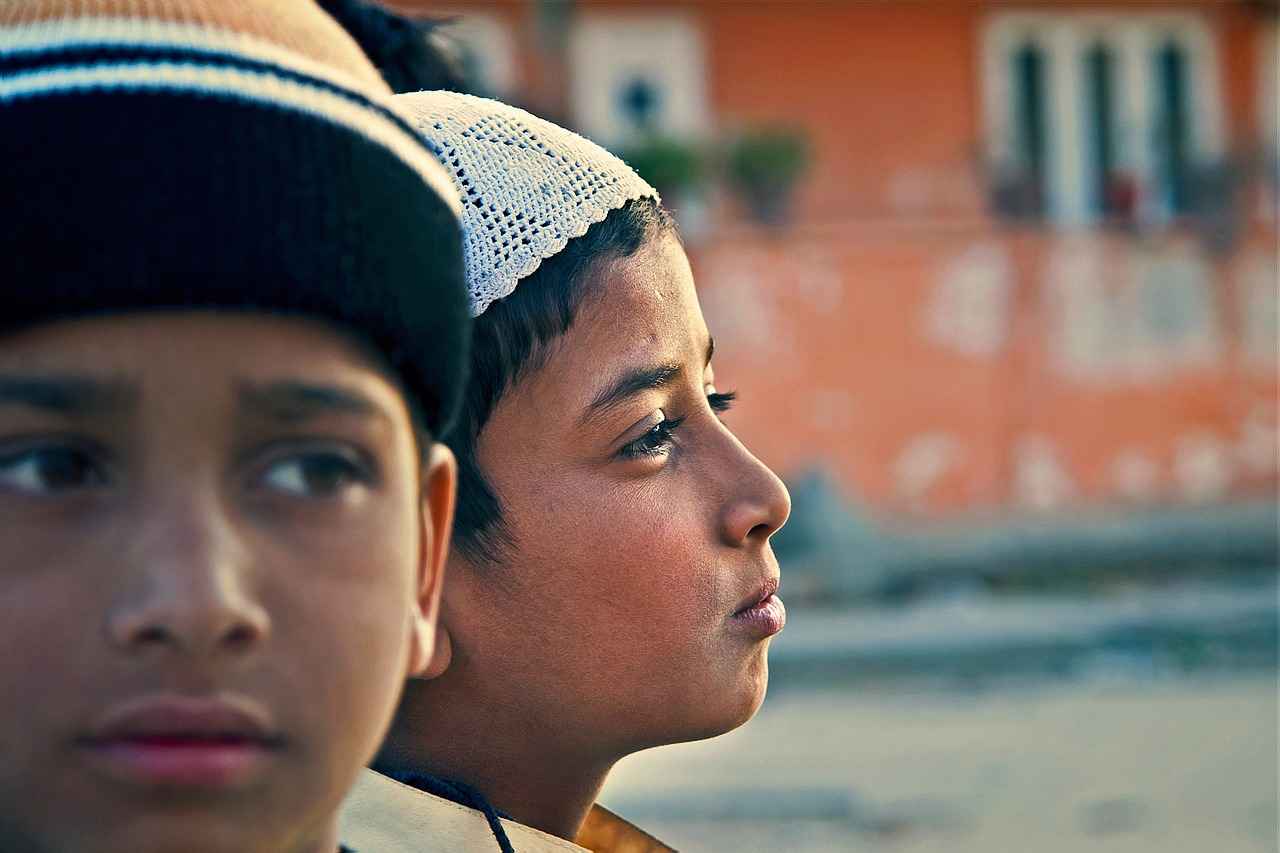
The Historical Context of Indian American Political Engagement
The historical context of Indian American political engagement is a compelling narrative that reflects the broader evolution of immigrant communities in the United States. Over the decades, Indian Americans have transitioned from a phase of minimal political involvement to becoming a formidable voting bloc, especially in states like New York. This transformation is marked by significant milestones, challenges, and the gradual recognition of their political potential.
Initially, Indian Americans faced numerous barriers to political participation. Early immigrants, primarily laborers, encountered racial discrimination and legal obstacles that limited their rights. The 1923 Supreme Court ruling in the case of United States v. Bhagat Singh Thind is a pivotal moment, as it denied Indian immigrants the right to become U.S. citizens, effectively excluding them from the political process. This legal disenfranchisement persisted for decades, hindering their ability to vote and participate in governance.
However, the landscape began to change in the mid-20th century. The 1965 Immigration and Nationality Act significantly altered the demographic makeup of Indian Americans, allowing for a new wave of immigrants who were better educated and more politically aware. This influx brought with it a growing consciousness of civil rights and social justice, aligning Indian Americans with broader movements advocating for equality.
By the 1980s and 1990s, Indian Americans began to assert their presence in the political arena. The election of Dalip Singh Saund as the first Indian American Congressman in 1956 marked a significant milestone, paving the way for future leaders. His election was a beacon of hope, illustrating that Indian Americans could indeed hold political office and influence policy decisions.
As the community grew, so did its political engagement. Organizations such as the Indian American Political Action Committee (IAPAC) emerged, focusing on mobilizing voters and advocating for issues pertinent to the Indian American community. These organizations played a crucial role in educating voters about their rights and the importance of participation in elections.
The turn of the millennium saw Indian Americans consolidating their political influence, particularly in urban centers like New York City. With a diverse electorate, Indian Americans began to emerge as a significant voting bloc, impacting local and state elections. Their voting patterns often reflected a strong emphasis on issues such as education, healthcare, and immigration reform, aligning with the broader concerns of the community.
In recent years, the political landscape has continued to evolve. The election of high-profile Indian American politicians, such as Kamala Harris and Pramila Jayapal, has further galvanized the community, inspiring increased participation and representation at all levels of government. Their success stories resonate with many, showcasing the potential for Indian Americans to influence policy and advocate for their interests effectively.
Despite these advancements, challenges remain. Issues such as underrepresentation in local government and the need for greater visibility in political discourse persist. However, the ongoing efforts of community organizations and grassroots movements are essential in addressing these challenges and fostering a more inclusive political environment.
In conclusion, the historical context of Indian American political engagement reveals a journey marked by resilience and determination. From overcoming legal barriers to becoming a vital part of New York’s electoral landscape, Indian Americans have forged a path that not only honors their heritage but also contributes significantly to the democratic process in the United States.

Demographics and Voting Patterns of Indian Americans
Understanding the demographics of Indian Americans in New York is crucial for analyzing their voting patterns, preferences, and the overall influence they wield in election outcomes. The Indian American community in New York is a mosaic of various ethnic backgrounds, languages, and religions, each contributing to a unique political identity.
- Population Size: As of recent estimates, there are over 300,000 Indian Americans residing in New York, making them one of the largest Asian American groups in the state.
- Diversity: The community encompasses a wide range of ethnicities including Punjabi, Gujarati, Bengali, and Tamil, which significantly influences their political views and priorities.
- Age Distribution: The demographic profile shows a younger population, with a significant percentage under the age of 35, indicating a potential for future political engagement.
The voting behavior of Indian Americans in New York reflects their diverse backgrounds and shared experiences. Historically, this community has leaned towards the Democratic Party, primarily due to its stance on immigration, education, and healthcare. However, recent elections have shown a shift, with some segments of the community expressing support for Republican candidates, particularly those who address economic growth and entrepreneurship.
One key factor influencing voting patterns is the level of education. Indian Americans are among the most highly educated groups in the United States, with a significant number holding advanced degrees. This educational attainment often correlates with progressive views on social issues, leading to higher support for candidates advocating for civil rights and social justice.
Moreover, the community’s engagement with local issues such as public safety, housing, and job creation plays a critical role in shaping their electoral preferences. Many Indian Americans prioritize candidates who address these concerns, reflecting their desire for effective governance that resonates with their daily lives.
In recent elections, voter turnout among Indian Americans has been noteworthy. Community organizations have mobilized efforts to increase participation through voter registration drives and educational campaigns, emphasizing the importance of civic engagement. This grassroots activism has resulted in a more informed electorate, capable of making decisions that align with their values and aspirations.
In summary, the demographics of Indian Americans in New York are diverse and complex, influencing their voting behaviors and preferences. As this community continues to grow and evolve, understanding these dynamics is essential for political candidates and parties aiming to connect with this vital voting bloc. Their impact on election outcomes is significant, and recognizing their unique needs and concerns will be crucial for future political engagement.

Key Issues for Indian American Voters
The Indian American community in New York is a vibrant and growing demographic that plays a crucial role in shaping the political landscape. This community is particularly concerned with several key issues that influence their voting behavior and candidate support. Among these, immigration, education, and healthcare stand out as the most significant.
- Immigration: Immigration policies are a primary concern for Indian American voters. Many in this community have personal experiences related to immigration, whether through their own journeys or those of family members. The desire for comprehensive immigration reform, which includes pathways to citizenship and protection from discrimination, drives many Indian Americans to support candidates who advocate for immigrant rights.
- Education: Education is another vital issue for Indian American voters. Many families place a high value on educational attainment and seek policies that support quality education for their children. This includes advocating for increased funding for public schools, affordable higher education, and programs that promote STEM (science, technology, engineering, and mathematics) education. Candidates who prioritize educational reforms and accessibility tend to receive strong support from this demographic.
- Healthcare: Access to quality healthcare is a pressing issue for many Indian Americans. The community often advocates for policies that ensure affordable healthcare coverage, especially for the elderly and those with pre-existing conditions. Issues related to mental health awareness and the availability of culturally competent healthcare services are also important. Candidates who address these concerns resonate well with Indian American voters.
In addition to these primary issues, Indian American voters are also increasingly concerned about economic opportunities, civil rights, and environmental policies. As a highly educated group, they tend to prioritize candidates who demonstrate a commitment to economic growth that benefits all communities, including initiatives that support small businesses and job creation.
Furthermore, the rise of social media has empowered Indian American voters to organize and advocate for their issues more effectively. Online platforms allow for the dissemination of information, mobilization of voters, and the establishment of community networks focused on political engagement. This digital activism is crucial in amplifying their voices and ensuring that their concerns are addressed in the political arena.
In conclusion, the key issues for Indian American voters in New York are multifaceted and reflect the community’s diverse needs and aspirations. By understanding these priorities, candidates can better align their platforms with the values and concerns of this influential voting bloc, ultimately shaping the future of New York’s political landscape.

The Role of Indian American Organizations in Elections
Indian American organizations have become instrumental in shaping the political landscape in New York, particularly during elections. These organizations serve as vital conduits for mobilizing voters, advocating for community interests, and enhancing political participation among their constituents. Understanding their role provides insight into the broader implications for democracy and representation.
One of the primary functions of these organizations is voter mobilization. They conduct extensive outreach efforts, including voter registration drives and informational seminars. By addressing barriers such as language and cultural differences, these organizations ensure that Indian Americans are not only registered but also informed about the electoral process. For instance, groups like the Indian American Political Action Committee (IAPAC) have been pivotal in educating voters about local and national issues that affect their community.
Advocacy is another critical area where Indian American organizations excel. They actively engage with policymakers to represent the interests of their constituents. Issues such as immigration reform, education, and healthcare are at the forefront of their agendas. By lobbying for policies that benefit the Indian American community, these organizations amplify the voices of their members, ensuring that their needs are considered in legislative discussions. This advocacy not only influences policy outcomes but also encourages greater political participation among community members.
Moreover, these organizations play a significant role in enhancing political participation. They host town hall meetings, forums, and debates that encourage dialogue and engagement. Such initiatives help demystify the political process and empower individuals to voice their opinions and concerns. For example, organizations like the Asian American Federation provide platforms for candidates to discuss their policies directly with the community, fostering a sense of connection and accountability.
The impact of Indian American organizations extends beyond just the electoral process. They contribute to building a politically aware community that values civic engagement. By instilling a sense of responsibility and encouraging participation in governance, these organizations help cultivate future leaders within the Indian American community. This generational shift in political involvement is crucial for sustaining long-term engagement and representation.
However, challenges remain. Many organizations face obstacles such as limited funding and resources, which can hinder their outreach efforts. Additionally, the diversity within the Indian American community can lead to varying priorities and interests, complicating unified advocacy efforts. Despite these challenges, the resilience and determination of these organizations continue to drive progress.
In conclusion, Indian American organizations are vital players in the electoral landscape of New York. Their efforts in mobilizing voters, advocating for community interests, and enhancing political participation are essential for fostering a more inclusive democracy. As these organizations evolve and adapt to changing political climates, their role will undoubtedly remain significant in shaping the future of Indian American political engagement.
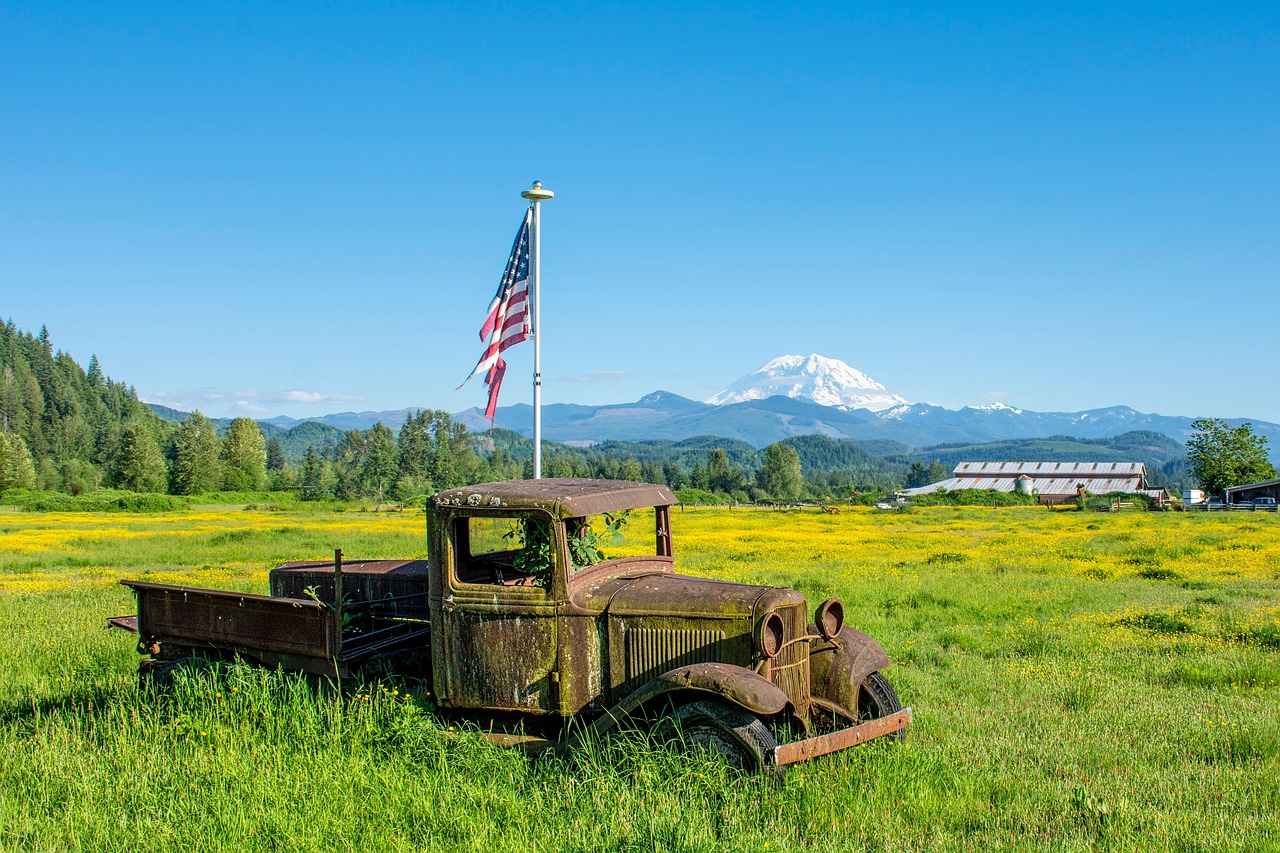
Challenges Faced by Indian Americans in the Electoral Process
The Indian American community, while increasingly influential in New York’s electoral landscape, faces a myriad of challenges that hinder their full participation in the democratic process. Understanding these obstacles is crucial for fostering greater electoral engagement and representation.
- Underrepresentation: Despite their growing numbers, Indian Americans often find themselves underrepresented in local and state government. This lack of representation can lead to a disconnect between the community’s needs and the policies enacted by elected officials. Many Indian Americans feel that their voices and concerns are not adequately addressed, which can discourage voter turnout and civic engagement.
- Language Barriers: Language can be a significant hurdle for many Indian Americans, particularly for those who are first-generation immigrants. Limited proficiency in English can impede their ability to understand complex electoral processes, campaign messages, and candidate platforms. This barrier can lead to confusion and misinformation, ultimately affecting their voting decisions.
- Socio-Economic Disparities: Socio-economic factors also play a critical role in electoral participation. Many Indian Americans, especially those from lower-income backgrounds, may struggle with basic needs such as housing and employment. These challenges can lead to a lack of time and resources to engage in the electoral process, including registering to vote or attending candidate forums.
- Cultural Differences: Cultural norms and expectations can influence political participation among Indian Americans. In some cases, there may be a reluctance to engage in political activities due to a focus on community cohesion or fear of social repercussions. This cultural aspect can limit the willingness of individuals to voice their opinions or participate in campaigns.
- Political Awareness: A lack of awareness about the electoral process and the importance of voting can also hinder participation. Many Indian Americans may not be familiar with local issues or the candidates running for office, leading to apathy or disengagement. Educational initiatives aimed at increasing political literacy are vital to overcoming this challenge.
- Disinformation: The rise of disinformation, particularly on social media, poses a significant challenge. Misinformation about candidates, policies, and the voting process can mislead voters and create confusion. It is essential for community organizations to provide accurate information and counteract false narratives that may deter participation.
To address these challenges, Indian American organizations and community leaders must work collaboratively to create strategies that promote voter registration, enhance political awareness, and advocate for greater representation. Initiatives such as voter education workshops, community forums, and outreach programs can empower individuals and ensure that their voices are heard in the electoral process.
In conclusion, while Indian Americans face several challenges in the electoral process, there are numerous opportunities for community mobilization and advocacy. By addressing these obstacles head-on, the Indian American community can strengthen its political influence and contribute to a more inclusive democratic process in New York.
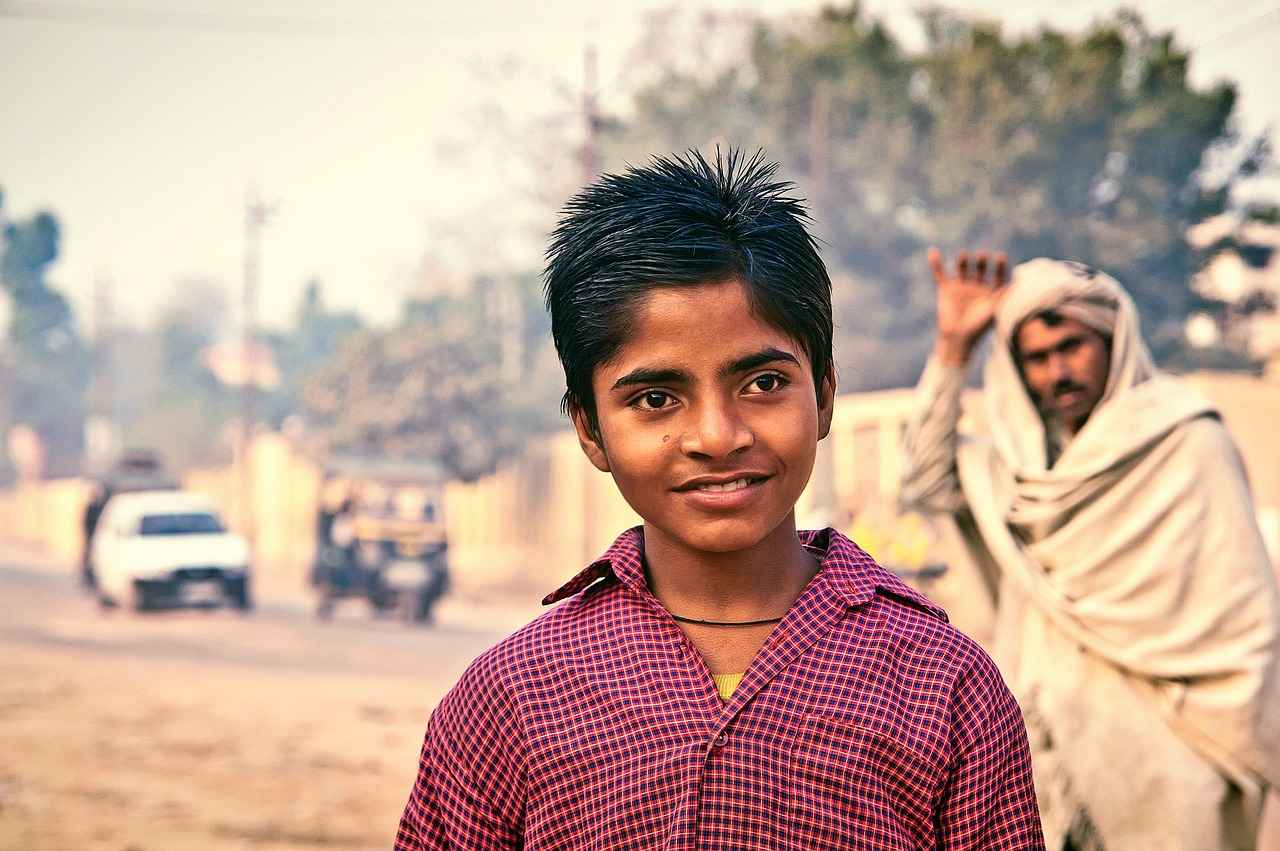
Opportunities for Indian Americans in Political Leadership
The landscape of political leadership in New York is evolving, and with it, the opportunities for **Indian Americans** to assert their influence and advocate for community-specific issues. As the visibility of Indian Americans in leadership roles increases, it opens doors for **greater representation** and a more profound impact on local policies that affect their community.
- Diverse Representation: The growing number of Indian American leaders in New York reflects the diversity within the community itself. This representation is crucial as it allows for a broader spectrum of voices and perspectives in political discussions, ensuring that the unique challenges faced by Indian Americans are addressed.
- Advocacy for Community Issues: With more Indian Americans in leadership positions, there is a significant opportunity for advocacy on issues that matter to the community, such as immigration reform, healthcare access, and educational equity. These leaders can bring attention to specific needs and work towards solutions that benefit not only Indian Americans but also the larger community.
- Networking and Collaboration: Increased visibility in political roles also facilitates networking opportunities. Indian American leaders can collaborate with other minority groups, creating coalitions that amplify their collective voices. This collaboration can lead to a more unified approach to tackling systemic issues affecting various communities.
- Engagement in Local Governance: Indian Americans stepping into political leadership roles can enhance civic engagement within their communities. By serving as role models, they inspire younger generations to participate in the political process, whether through voting, advocacy, or even running for office themselves.
- Influence on Policy Making: As Indian Americans gain more seats in local and state government, they have the power to influence policy making directly. Their experiences and insights can lead to more inclusive policies that reflect the needs of a diverse population.
The increasing presence of Indian Americans in political leadership roles is not just a matter of representation; it signifies a shift towards a more inclusive political landscape in New York. This evolution presents a unique opportunity for Indian Americans to not only advocate for their community but also to engage with broader societal challenges.
Moreover, the active participation of Indian Americans in politics can dismantle stereotypes and misconceptions about the community. By showcasing their contributions and leadership capabilities, they can foster a better understanding of their culture and values among the wider population.
In conclusion, the opportunities for Indian Americans in political leadership are vast and promising. As they continue to rise in visibility and influence, they hold the potential to reshape the political discourse in New York, ensuring that the voices of their community are heard and valued. This not only benefits the Indian American community but also enriches the democratic process as a whole, paving the way for a more equitable society.

Influence of Social Media on Indian American Voter Engagement
In today’s digital age, social media has transformed the landscape of political engagement, especially among minority communities such as Indian Americans. This demographic has increasingly leveraged platforms like Facebook, Twitter, and Instagram to amplify their voices, mobilize voters, and disseminate critical information regarding electoral processes.
Social media serves as a vital channel for political discourse, allowing Indian Americans to share their perspectives on pressing issues such as immigration, healthcare, and education. This online engagement fosters a sense of community and belonging, encouraging individuals to participate in discussions that affect their lives and the future of their families.
The ability to mobilize voters through social media is particularly noteworthy. Grassroots organizations within the Indian American community have utilized these platforms to organize voter registration drives and encourage turnout during elections. For instance, campaigns that highlight the importance of voting and provide information on polling locations have gained traction, leading to increased voter participation. According to recent studies, communities that actively engage on social media platforms tend to see higher voter turnout rates.
Moreover, social media enables the dissemination of information about electoral processes, making it easier for Indian Americans to understand their rights and responsibilities as voters. The sharing of resources, such as how to register to vote or the details of upcoming elections, empowers individuals who may have previously felt disenfranchised. This democratization of information is crucial in a diverse community where language barriers and varying levels of political knowledge can pose challenges.
- Community Building: Social media helps build a sense of community among Indian Americans, allowing them to connect over shared experiences and concerns.
- Real-Time Updates: Platforms provide real-time updates on political events, candidate positions, and important deadlines, keeping voters informed.
- Engagement with Candidates: Social media allows Indian Americans to engage directly with political candidates, asking questions and expressing their needs.
However, the influence of social media is not without its challenges. The spread of misinformation can lead to confusion and apathy among voters. It is crucial for community leaders and organizations to combat this by providing accurate information and promoting media literacy within the community.
In conclusion, the impact of social media on Indian American voter engagement is profound. As this community continues to harness the power of digital platforms, their political influence is likely to grow, shaping the electoral landscape in New York and beyond. The future of Indian American participation in politics will increasingly depend on their ability to navigate and utilize social media effectively.
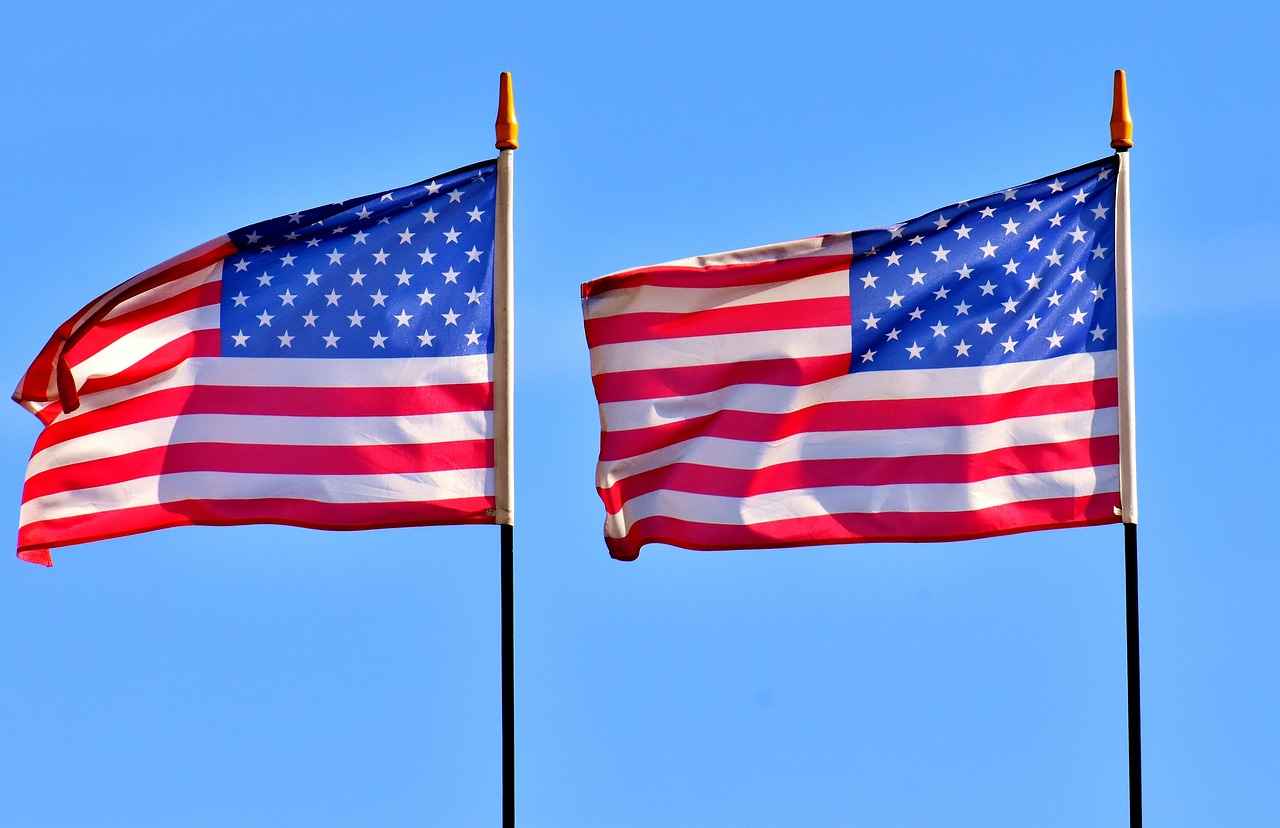
Impact of National Policies on Local Elections
The Impact of National Policies on Local Elections
National policies play a crucial role in shaping the political landscape, particularly for minority communities such as Indian Americans in New York. These policies, especially those concerning immigration and civil rights, significantly influence the electoral behavior and priorities of Indian American voters.
One of the most pressing issues for Indian Americans is immigration policy. Many members of this community are first-generation immigrants or have family members who are navigating the complexities of the U.S. immigration system. Changes in federal immigration laws can create a ripple effect, affecting not only individual lives but also the broader community’s perception of political candidates. For instance, policies that promote pathways to citizenship or protect against deportation resonate strongly with Indian American voters who prioritize the stability and security of their families.
Moreover, civil rights policies, including those addressing discrimination and equal opportunity, are also pivotal in shaping the voting behavior of this demographic. Indian Americans have historically faced challenges related to racial profiling and discrimination. Therefore, candidates who advocate for robust civil rights protections tend to gain favor among Indian American voters. This demographic is increasingly aware of the implications of national policies on their daily lives, which in turn influences their electoral priorities.
Additionally, the political climate surrounding national policies can mobilize Indian American voters. For example, during periods of heightened anti-immigrant sentiment, there is often a surge in voter registration and turnout within the community. Grassroots organizations and advocacy groups play a vital role in this mobilization, encouraging individuals to participate in the electoral process as a means of voicing their concerns and protecting their rights.
In New York, the influence of national policies is further compounded by local political dynamics. Local candidates who align their platforms with the concerns of Indian American voters often see greater support. For instance, candidates who address issues such as affordable housing, healthcare access, and education reform—issues that are particularly relevant to the Indian American community—are more likely to resonate with this electorate.
To illustrate, consider the case of recent elections in New York where candidates who openly supported comprehensive immigration reform and civil rights protections garnered significant support from Indian American voters. This trend indicates that national policies not only influence individual voter priorities but also shape the overall electoral landscape, leading to a more engaged and politically active community.
In conclusion, the impact of national policies on local elections is profound, particularly for Indian Americans in New York. As this community continues to grow and evolve, their electoral behavior will increasingly reflect their responses to national policy changes, making it essential for political candidates to understand and address these issues to secure their support.
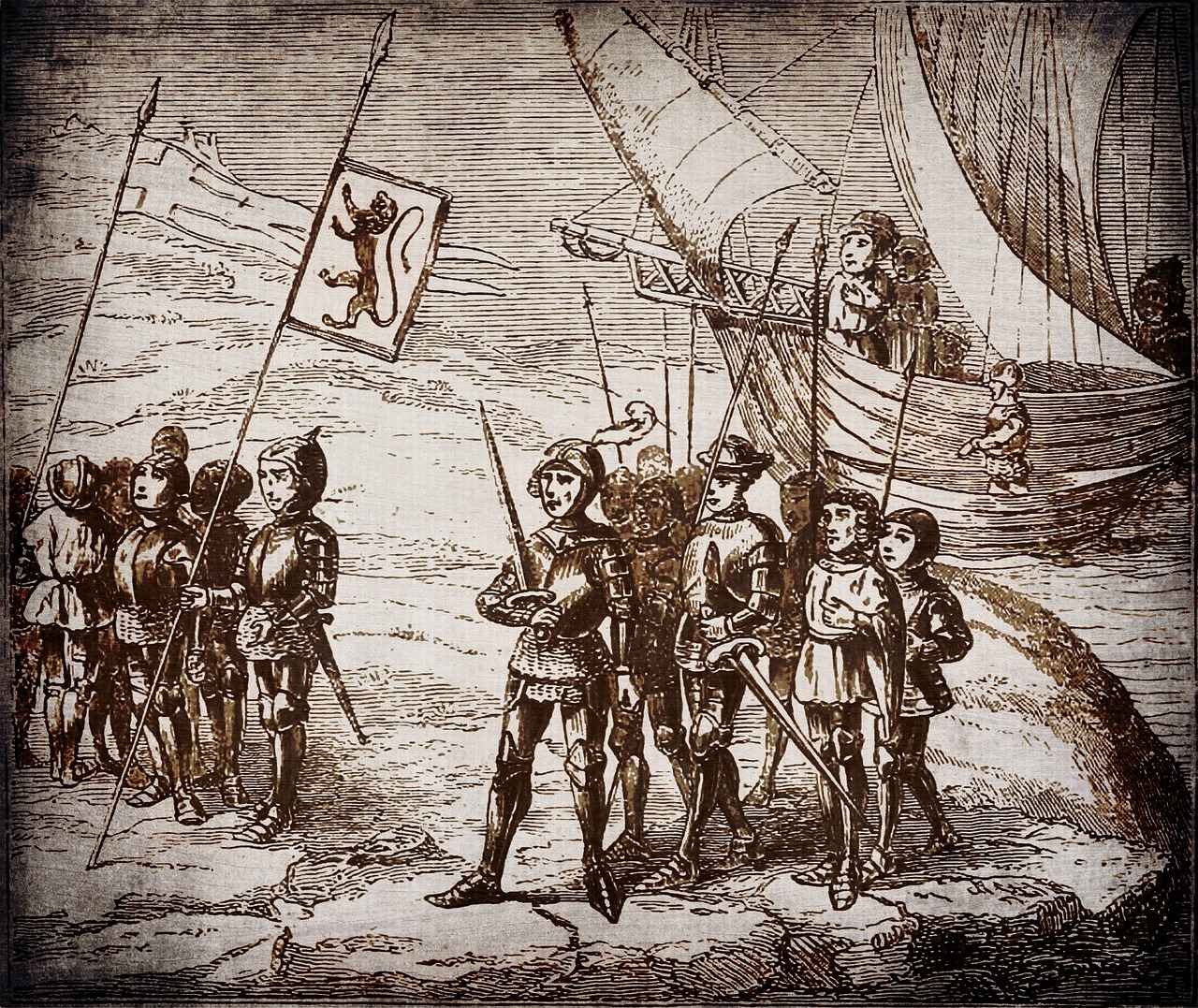
Case Studies: Successful Indian American Candidates
In recent years, the presence of Indian Americans in political offices across New York has significantly increased, showcasing their potential for representation and the profound impact of diverse voices in local governance. These candidates not only reflect the community’s aspirations but also address issues that resonate deeply with their constituents. This section explores notable case studies of successful Indian American candidates, highlighting their journeys, challenges, and contributions to the political landscape.
- Raja Krishnamoorthi: Elected to the U.S. House of Representatives in 2016, Raja Krishnamoorthi represents Illinois’s 8th congressional district. His journey began as a child of Indian immigrants, and he has consistently advocated for issues such as education, healthcare, and economic growth. His success serves as an inspiration for many aspiring Indian American politicians in New York and beyond.
- Preet Bharara: Although not elected, Preet Bharara’s role as the former U.S. Attorney for the Southern District of New York illustrates the influence of Indian Americans in pivotal legal positions. His tenure was marked by high-profile cases and a strong stance against corruption, showcasing the ability of Indian Americans to impact governance even outside of elected office.
- Manhattan Borough President Mark Levine: Elected in 2021, Mark Levine has been a vocal advocate for public health, affordable housing, and education reform. His leadership during the COVID-19 pandemic highlighted the importance of effective governance and community engagement, resonating with New York’s diverse population.
- Rashmi S. Gupta: A rising star in local politics, Rashmi Gupta was elected to the city council in 2021. Her campaign focused on environmental sustainability and immigrant rights, reflecting the priorities of her constituents. Her success underscores the growing influence of Indian Americans in local governance.
These case studies exemplify the diverse paths Indian American candidates have taken to achieve success in the political arena. Their unique backgrounds and experiences contribute to a richer political discourse, emphasizing the importance of representation in addressing community-specific issues.
Moreover, the success of these candidates illustrates the potential for Indian Americans to not only participate in the electoral process but to also lead and innovate within it. Their achievements inspire younger generations to engage in politics, fostering a sense of empowerment and community involvement.
As Indian Americans continue to make strides in various political positions, the impact of their diverse voices becomes increasingly evident. This representation is crucial in shaping policies that reflect the needs and aspirations of a multicultural society.
In conclusion, the case studies of successful Indian American candidates in New York highlight the importance of representation in local governance. Their journeys are not just personal victories; they represent a collective advancement for the Indian American community, paving the way for future leaders to emerge.
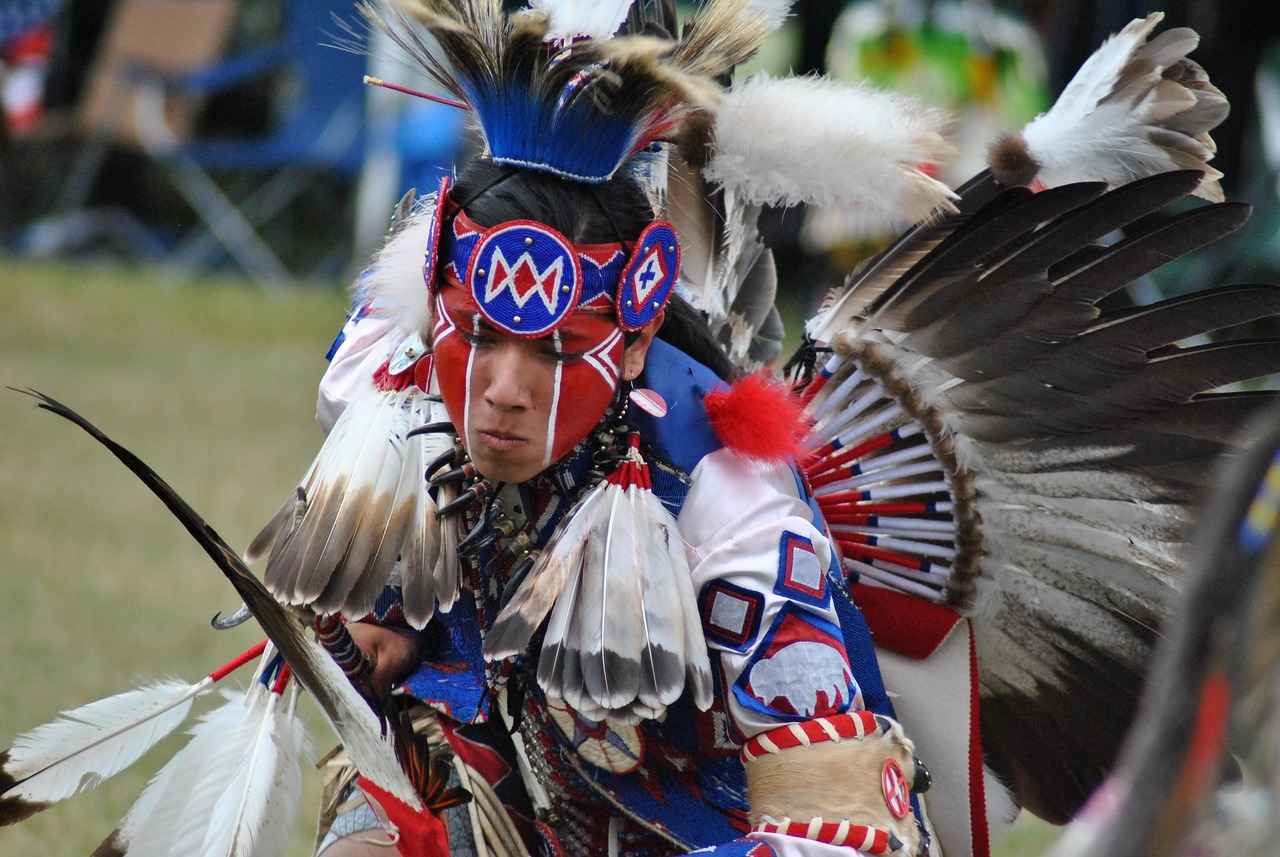
Community Mobilization Efforts Before Elections
In the vibrant landscape of New York’s democracy, community mobilization efforts play a pivotal role in enhancing electoral participation, particularly among Indian Americans. These initiatives encompass a variety of activities, including voter registration drives, educational programs, and outreach campaigns aimed at raising awareness about the electoral process.
The importance of voter registration drives cannot be overstated. These drives serve as a crucial first step in the electoral process, ensuring that eligible voters are registered and ready to cast their ballots. Organizations such as the Indian American Forum and local community centers often collaborate to organize these events, providing assistance with the registration process and offering resources to help individuals understand their voting rights. By simplifying the registration process and addressing common concerns, these drives significantly increase participation rates.
Moreover, educational initiatives play a vital role in empowering the Indian American community. Workshops and seminars are frequently held to inform community members about the importance of voting and the impact of their participation on local and national issues. These initiatives often cover topics such as how to vote, the significance of local elections, and the influence of policies on the community. By fostering a deeper understanding of the electoral process, these programs encourage more individuals to engage actively in democracy.
Additionally, social media has emerged as an effective tool for mobilization. Platforms like Facebook, Twitter, and Instagram are increasingly used to disseminate information about upcoming elections, voter registration deadlines, and educational resources. Community leaders leverage these platforms to reach a broader audience, ensuring that critical information is accessible to all. This digital engagement not only raises awareness but also fosters a sense of community among Indian Americans, encouraging collective action.
Furthermore, collaboration with local organizations and advocacy groups enhances the effectiveness of these mobilization efforts. By partnering with established entities, community leaders can tap into existing networks and resources, amplifying their outreach efforts. This collaboration often results in comprehensive campaigns that address specific issues affecting the Indian American community, such as immigration policies, healthcare access, and education reform.
Despite these positive strides, challenges remain. Language barriers and cultural differences can hinder participation, making it essential for mobilization efforts to be inclusive and accessible. Providing materials in multiple languages and creating culturally relevant content can help bridge these gaps, ensuring that all community members feel empowered to participate in the electoral process.
In conclusion, the role of community mobilization efforts in increasing electoral participation among Indian Americans in New York is crucial. Through targeted voter registration drives, educational initiatives, and the strategic use of social media, these efforts not only enhance awareness but also foster a sense of belonging and empowerment within the community. As the Indian American population continues to grow, sustained focus on mobilization will be essential in shaping their influence in New York’s elections.

The Future of Indian Americans in New York Elections
The Indian American community in New York has been steadily gaining prominence in the political arena, reflecting a broader trend of increasing engagement and representation. As we look toward the future, the potential for Indian Americans in New York elections appears not only promising but also transformative. This burgeoning influence can be attributed to several factors, including demographic shifts, increased political activism, and the rise of community leaders who are committed to advocating for the interests of Indian Americans.
In recent years, there has been a notable surge in political engagement among Indian Americans in New York. This increase is evident through higher voter turnout rates, active participation in local governance, and the establishment of various advocacy groups. Organizations such as the Indian American Political Action Committee (IAPAC) have played a pivotal role in mobilizing voters and encouraging community involvement in the electoral process. These initiatives not only empower individuals but also foster a sense of community identity and collective purpose.
The representation of Indian Americans in government is on the rise, with more individuals from the community seeking and winning public office. This trend is significant as it ensures that the voices of Indian Americans are heard in decision-making processes that affect their lives. Recent elections have seen several Indian American candidates successfully elected to key positions, including city councils and state legislatures. This increased representation is crucial for addressing issues that matter to the community, such as immigration reform, education policies, and healthcare access.
Despite the progress made, challenges remain that could hinder the future success of Indian Americans in New York elections. Underrepresentation in certain areas, coupled with language barriers and socio-economic disparities, can limit participation. To combat these challenges, community leaders and organizations must continue to advocate for inclusive policies and provide resources that empower voters. Educational initiatives aimed at informing the community about the electoral process can also play a vital role in overcoming these obstacles.
As the Indian American community continues to grow, building a robust political network will be essential. Collaborations with other minority groups and alliances with established political entities can amplify the voices of Indian Americans. Engaging in coalition-building efforts can lead to a more unified front on critical issues and enhance the community’s influence in local elections.
Technology, particularly social media, has become an indispensable tool for voter engagement. Indian Americans are increasingly utilizing platforms like Facebook, Twitter, and Instagram to disseminate information, mobilize voters, and advocate for community issues. By harnessing the power of technology, the community can enhance its outreach efforts and foster greater participation among younger voters, who are often more engaged online.
In conclusion, the future of Indian Americans in New York elections is bright, characterized by rising political engagement and the potential for increased representation in government. As challenges are addressed and opportunities are seized, the community’s influence on the political landscape will undoubtedly grow. By continuing to advocate for their needs and leveraging their collective power, Indian Americans can play a pivotal role in shaping the future of New York’s electoral process.
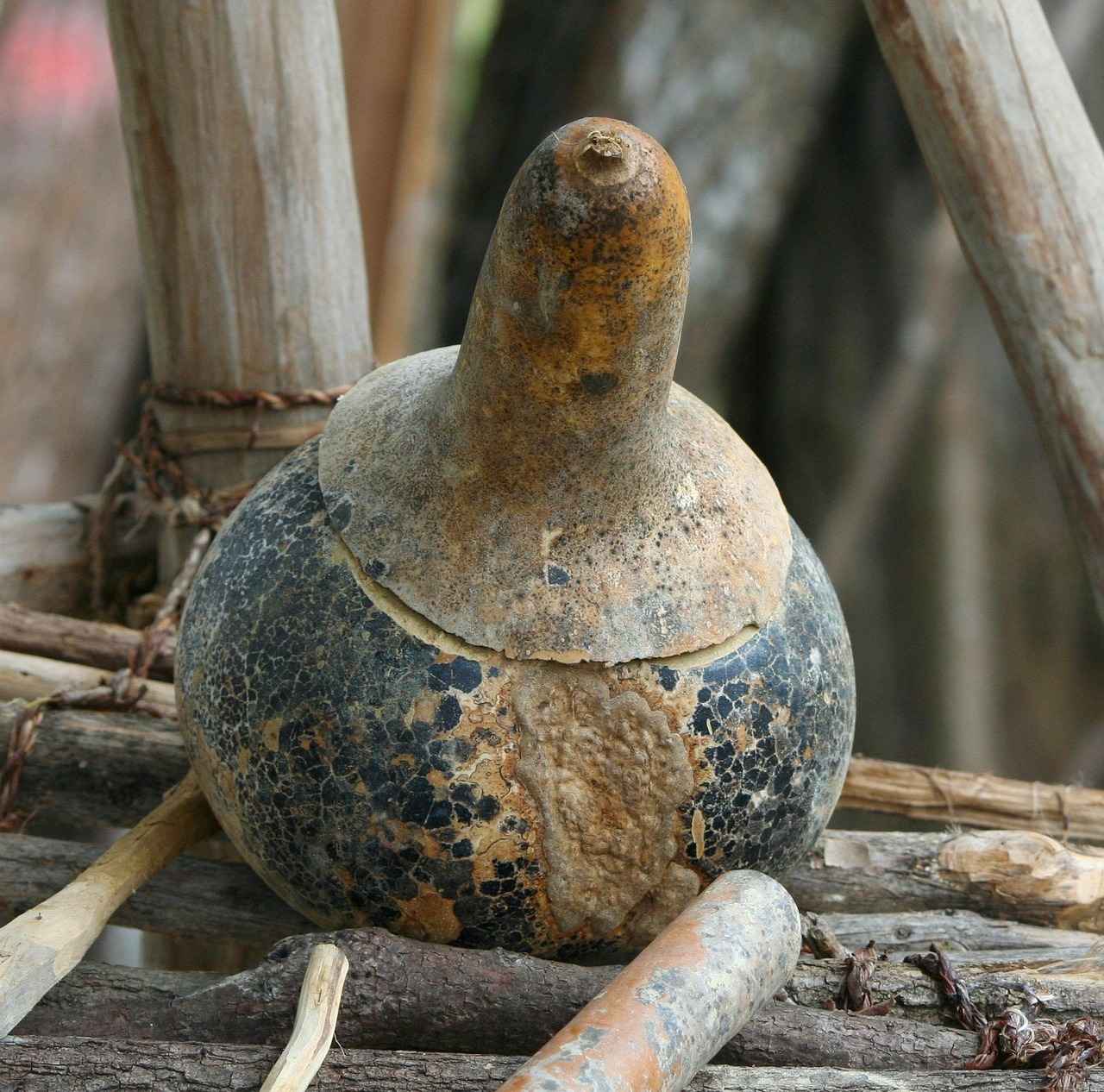
Conclusion: The Path Forward for Indian Americans in Politics
The Role of Indian Americans in New York’s Elections: Challenges and OpportunitiesAs the Indian American community continues to grow and evolve, their role in New York’s elections will be pivotal in shaping the political landscape and addressing community needs. This article explores the significant impact of Indian Americans in New York’s electoral landscape, discussing their challenges, opportunities, and contributions to the democratic process.
Understanding the Indian American Community in New York
The Indian American community in New York is a vibrant tapestry of cultures, languages, and traditions. This diversity enriches the political discourse, as individuals from various ethnicities and religions bring unique perspectives to the table. The community’s socioeconomic background also plays a crucial role in shaping their political engagement and voting behavior. Many Indian Americans are well-educated and hold professional positions, which influences their political priorities and the issues they advocate for.
The Historical Context of Indian American Political Engagement
Historically, Indian Americans faced numerous barriers to political participation, from immigration restrictions to cultural differences. However, over the decades, there has been a noticeable shift. From limited representation to becoming a significant voting bloc, the evolution of Indian American political engagement reflects broader changes in societal attitudes and policies. This historical context is essential to understanding their current influence in New York’s elections.
Demographics and Voting Patterns of Indian Americans
Analyzing the demographics of Indian Americans in New York reveals intriguing voting patterns. According to recent studies, Indian Americans tend to lean towards the Democratic Party, primarily due to their stance on issues like immigration, education, and healthcare. Understanding these patterns helps political candidates tailor their campaigns and address the specific needs of this community.
Key Issues for Indian American Voters
Indian American voters prioritize a range of issues that significantly shape their electoral decisions. Key concerns include immigration reform, access to quality education, affordable healthcare, and civil rights protections. These issues resonate deeply within the community and often dictate the level of support candidates receive.
The Role of Indian American Organizations in Elections
Various organizations within the Indian American community play a crucial role in mobilizing voters and advocating for community interests. These organizations often conduct voter registration drives, educate constituents about the electoral process, and work to increase political participation. By fostering a sense of community and shared purpose, they enhance the collective voice of Indian Americans in New York.
Challenges Faced by Indian Americans in the Electoral Process
Despite their growing influence, Indian Americans encounter numerous challenges in the electoral process. Issues such as underrepresentation in political offices, language barriers, and socioeconomic disparities hinder their full participation. Addressing these challenges is vital for ensuring that the community’s voice is heard and represented in government.
Opportunities for Indian Americans in Political Leadership
The increasing visibility of Indian Americans in political leadership roles presents significant opportunities for greater representation. With a growing number of Indian American candidates running for office, the potential for advocacy on community-specific issues is expanding. This trend not only empowers the community but also enriches the political landscape in New York.
Influence of Social Media on Indian American Voter Engagement
Social media has emerged as a powerful tool for engaging Indian American voters. Platforms like Facebook and Twitter facilitate political discourse, allowing community members to share information and mobilize support for candidates and issues. This digital engagement is crucial in reaching younger voters and fostering a sense of community involvement.
Impact of National Policies on Local Elections
National policies, particularly those related to immigration and civil rights, significantly influence the electoral behavior of Indian American voters. Changes in federal legislation can resonate at the local level, shaping the priorities and concerns of the community. Understanding these dynamics is essential for candidates seeking to connect with Indian American voters.
Case Studies: Successful Indian American Candidates
Highlighting successful Indian American candidates in New York showcases the potential for representation and the impact of diverse voices in local governance. These candidates often advocate for policies that resonate with the community, demonstrating the importance of having leaders who understand and address community-specific needs.
Community Mobilization Efforts Before Elections
Community mobilization efforts, including voter registration drives and educational initiatives, are essential in increasing electoral participation among Indian Americans in New York. These efforts not only inform voters about the electoral process but also empower them to make their voices heard.
The Future of Indian Americans in New York Elections
Looking ahead, the future of Indian Americans in New York elections appears promising. With rising political engagement and the potential for increased representation in government, the community is poised to play a crucial role in shaping the political landscape. As they continue to advocate for their needs and interests, the impact of Indian Americans on New York’s elections will only grow stronger.
Frequently Asked Questions
- What role do Indian Americans play in New York’s elections?
Indian Americans significantly influence New York’s electoral landscape by acting as a vital voting bloc. Their diverse backgrounds and shared interests shape political engagement, making them a crucial demographic for candidates seeking support.
- What challenges do Indian American voters face?
Despite their growing influence, Indian American voters encounter challenges such as underrepresentation in political offices, language barriers, and socio-economic disparities that can hinder their participation in elections.
- How do Indian American organizations contribute to elections?
Various Indian American organizations mobilize voters, advocate for community interests, and enhance political participation. They play a key role in educating the community about candidates and issues, ensuring that voices are heard.
- What issues are most important to Indian American voters?
Indian American voters prioritize issues like immigration, education, and healthcare. These topics significantly influence their electoral decisions and the candidates they choose to support.
- How has social media impacted Indian American voter engagement?
Social media has become a powerful tool for Indian Americans, enabling them to engage in political discourse, mobilize voters, and share critical information about the electoral process, thereby enhancing community participation.
- What is the future of Indian Americans in New York elections?
The future looks promising, with increasing political engagement and the potential for greater representation in government. As the community continues to grow, their influence in shaping the political landscape will likely expand.













